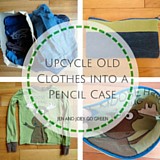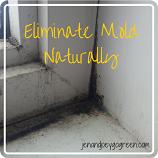
Victoria at Mommy is Green asked a question about kitchen composting so I thought I would post about my experience in vermicomposting. Vermicomposting is composting with worms and it is not as gross as it sounds. If you do it right the worms stay where they should, in the bin. It really is an excellent way to compost if you do not have a backyard or the space to outdoor compost.
Materials
You are going to need a bin. The size will depend on how much room you have and how much organics you produce. A typical family of 4 produces 6lbs of organics per week. You will also need bedding material and some red wiggler worms. You can get the red wigglers by splitting them from someone who already vermicomposts or you can find someone who supplies them. Red wigglers are used because they can eat their body weight in a day and leave behind a rich soil fertilizer.
Setup
Drill holes in the side and the top of the bin to help the worms breathe. You will also need at least 10 drainage holes 1cm in size on the bottom of the bin. Place the bin on small blocks over a tray.
There are several options for bedding for your bin. Personally I would use a mixture of black soil and shredded paper. Simply shred the paper (not glossy, waxed, bleached or coloured paper), wet it with water and then mix with black top soil. An alternative to this method would be to soak peat moss overnight in water then squeeze out the extra liquid and combine it with crushed egg shells.
Getting Started
There are several things you can do to keep your worms happy. Firstly they do not like bright light. They like dark environments with a moderate temperature so do not leave your bin in direct sunlight. If you are keeping it outdoors make sure you bring it indoors if the temperature drops below 4C. They do not like too much moisture so make sure you drain your food waste before putting it into your vermicomposter.
You can put egg shells, coffee grinds, tea bags, fruit peels, vegetable scraps and bread/baked goods into your vermicomposter. You will have more success if you put in smaller pieces rather than say a full apple. You should avoid adding dairy products, oily food, meat, fish, bones.
Make sure you always cover your food scraps when you add them into your bin.
Harvesting your Compost
It will take about 2-3 months before all of your bedding will be gone and it will be time to harvest your compost! Just follow these few simple steps:
1. Remove the lid to your composter and move the bedding material to one side.
2. Prepare new bedding and put it in the side that you cleared. Add food scraps to this side.
3. Cover only this side with plastic or a lid. Within 2 weeks your worms will migrate to the new side.
4. Using a bright light on the finished material, scoop out the compost.
5. Spread the new bedding out to cover the whole bin.
6. Add some fresh bedding and food scraps and start composting again.
The compost that you harvest can be kept in a tightly closed container until you are ready to use it. You can use it for plants, your garden or as potting soil!
If the bin set up sounds like too much work you can easily buy a ready made vermicomposter.
If the bin set up sounds like too much work you can easily buy a ready made vermicomposter.
Stay tuned for Part 2 where I will cover solutions to common vermicomposting problems.
Related Posts - Check them Out
Sometimes Composting is Gross
A Rainy Summer is a Good Summer
Garden Update
Disclaimer - this post contains affiliate links that when used help to pay for this site







Thank you, Jen! This post is very helpful. I appreciate you taking the time to write it. :)
ReplyDelete